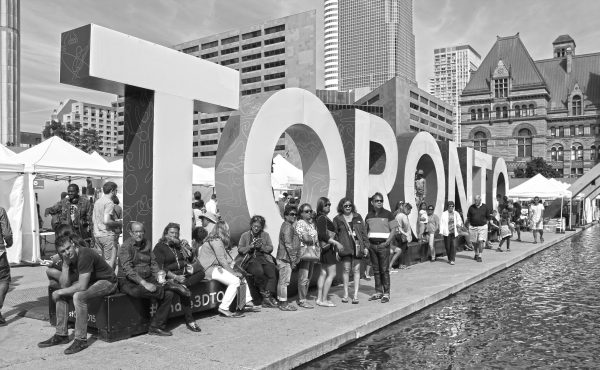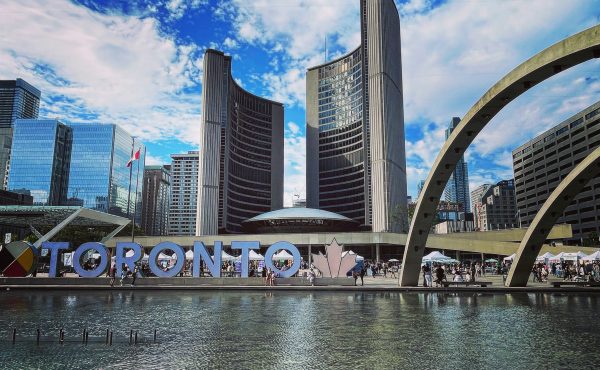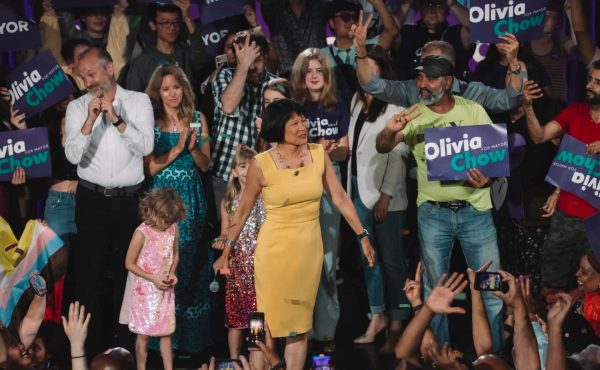On Wednesday morning, Metro Morning’s Matt Galloway made the claim that Toronto’s city council is more divided than ever. While rhetorically council might be more polarized than ever, the truth of the matter is that council is increasingly united as an orange, red and blue rainbow majority.
Early in this term of council, Mayor Ford won votes by impressively wide margins. The votes to slash city councillors’ office budgets and end the Vehicle Registration Tax were 40-5 and 39-6 respectively. Even shutting the Urban Affairs Library, which was not part of the mayor’s election mandate, passed easily with a 25-19 vote.
But times have changed. In the course 15 months, centrists and moderate conservatives on council have increasingly lost faith in the mayor and have demonstrated their willingness to work with progressives where compromise can be found.
While the controversy over plans for the waterfront ended in a compromise that allowed Mayor Ford and his supporters on council to save face, the 2012 budget was the first outright defeat of the mayor, bringing council to a point where it truly had never been more divided. Case in point: councillors Gloria Lindsay Luby, Josh Matlow and Mary-Margret McMahon all voted to close the Urban Affairs Library in the 2011 budget but against library hour reductions in 2012. Thanks to those councillors, the library hour reductions proposed by the Ford administration were reversed by a razor-thin 22-21 majority (Councillor James Pasternak, a conservative, was the 23rd vote for other budget amendments but cannot vote on the library budget due to a conflict of interest).
But since then the divide has lessened as more moderate conservatives have joined councillors Lindsay Luby and Pasternak to work toward compromises that serve the public interest.
Where Councillor John Parker was once reviled by progressives for being an MPP in the Mike Harris government, endorsing Rob Ford’s candidacy in the 2010 election (after he first endorsed Rocco Rossi) and then orchestrating the cloak-and-dagger demise of the Jarvis Street bike lanes, with his vocal opposition to the mayor’s subway plan and the sacking of TTC head Gary Webster, progressives are mostly willing to forget Councillor Parker’s prior bad acts.
And then, of course, there’s Councillor Karen Stintz who led the charge for a light rail plan over the Mayor’s subway plan. With a hero’s reception from progressives and demonization from the right, Councillor Stintz won’t have any qualms about crossing the Ford administration when her conscience tells her to.
While it’s too early to say that there is a governing coalition on council that excludes Mayor Ford, the momentum of the rainbow majority on council is having an undeniable impact.
In June 2011, Mayor Ford scored a big win with a 33-10 vote to sell-off 22 single-family Toronto Community Housing Corporation (TCHC) homes. This month, however, the mayor was in full retreat when he agreed to a Councillor Ana Bailao-engineered compromise to sell just 56 of the 675 TCHC homes he had planned to divest and create a Bailao-led task force to determine how best to manage the rest of the 675 homes. That compromise occurred at a noteworthy stage: before the issue had even been tabled at a committee of city council. This means the Mayor knew he wouldn’t have the votes at council to get his way, implicitly acknowledging the rise of the rainbow majority.
Institutionally, the only thing standing in the way of the rainbow majority from taking over as a governing coalition is committee and board assignments and structures. Agencies are governed by boards of directors that include in whole (TTC) or in part (Toronto Public Library, for example) city councillors that are appointed to their posts by city council (this was done at the very beginning of the term of council when Mayor Ford had a majority of councillors supporting his agenda). As we saw with the vote to oust Gary Webster on Tuesday, Mayor Ford’s allies — through their appointments to these boards — can push an agenda that does not have the support of city council.
Additionally, city council has a series of standing committees that are supposed to consider an issue before it gets to city council. Without a two-thirds vote, a new item of business is referred to a standing committee. It’s at these committees that the Ford administration can bury initiatives it doesn’t like.
The exception to requiring a two-thirds vote to avoid sending a matter to committee is for a special meeting of city council to be called by the mayor or a majority of councillors to discuss one or more specific issues. This was done recently to allow council to debate transit issues when Mayor Ford was preventing that from happening. But governing consistently by special meeting has considerable drawbacks, including the appearance of an unstable government and the inability to include formal opportunity for public input in decision-making processes.
Given that a coalition is unlikely to grow to the two-thirds of councillors (though Councillor Adam Vaughan is optimistic) required to change the structure of committees (for example, removing the mayor’s power to appoint committee chairs and thus the majority of Executive Committee), if the rainbow majority is serious about acting as a proactive, governing coalition it needs to begin to alter the composition of key committees and boards where possible, which only requires the support of a simple majority of councillors.
First up for a change in composition is likely to be the TTC board given the need to send a clear message to the province on Toronto’s transit priorities and the need to ensure the Mayor’s allies don’t unnecessarily hold up progress on LRT construction. Having shown themselves as petty and mean-spirited with their decision to fire Gary Webster, it seems only a matter of time until Mayor Ford’s allies are relegated to a minority on other key committees and boards.
As Councillor Shelley Carroll said recently, it’s important that Toronto not get mired in an opposition mindset but rather embrace proposition. To do that effectively, the growing rainbow majority will need to demonstrate unity across the political spectrum and use its power to seize the institutional levers that will enable that majority to continue building our city in the interests of its citizens.




